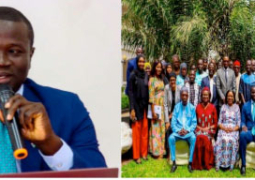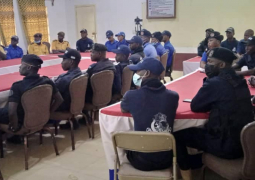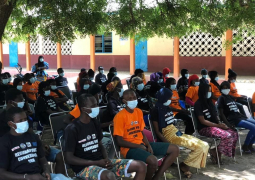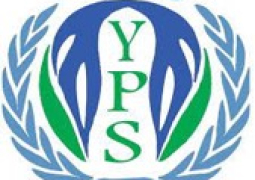
In the four years 2014-17, some 1.7 million people risked their lives by fleeing across the Mediterranean Sea for Europe, a journey in which over 13,000 have died or have gone missing.
This report is a contribution to understanding what the proper policy responses to this movement of people should best be.
The Gambia, thousands of whom have been seeking a better life in Europe – often called the ‘back way’.
This study asks: Why have so many young Gambians become irregular migrants and what can be done to help them and The Gambia manage this exodus and promote national development?
Evidence suggests that addressing these questions involves analysing issues lying at the root of this migration.
Until recently, Gambian migration was to a large extent the result of repressive government policies and the lack of political and civil rights.
The democratic election of a new government in December 2016, which swept away 22 years of often brutal and repressive rule, means that the prospects for Gambians are much brighter now.
But not all Gambian migration was the result of political repression and many young Gambians are still leaving the country.
Unless and until The Gambia improves job prospects and agricultural livelihoods – which also involves seriously addressing climate change – large-scale migration from the country is likely to continue.
Young people are leaving because of the lack of jobs and opportunities in rural and urban areas, the lack of adequate support to farming which is being badly affected by climate change and because they see a better life in Europe.
But the other side of this is that migration can be a development strategy and a livelihood choice for people, who have a right to migrate for economic purposes if they choose.
The right to movement and the right to leave and return to one’s own country are fundamental rights, but often overlooked in the debate about migration and development.
Indeed, Gambians who have migrated are contributing to the development of their country by sending back remittances to their families.
These remittances averaged US$181 million a year during 2013-15, equivalent to around 20% of GDP, one of the highest proportions in the world.
Thus the relationship between migration and development is complex. ActionAid holds the view that the human right to seek safety, security, dignity, and sustainable livelihoods is inalienable and indivisible, and therefore calls for the humane treatment of - and reasonable assistance for - all those who are compelled to seek survival and protection.
While the new government is committed to addressing many challenges the country faces, not all of its policies, nor those of The Gambia’s donors, are positive and some others are missing.
The government needs to focus on prioritising support to agriculture - where 70% of Gambians earn their livelihoods - which means addressing the needs of small-scale women and men farmers and adapting to climate change.
Northern governments - which have primarily caused climate change – should also be doing much more to help address this in The Gambia.
And although it is mainly men migrating, the scale of migration is also having an impact of women – especially women farmers who constitute a growing proportion of the country’s agricultural workforce. This means that The Gambia’s agricultural policy must increasingly focus on benefitting women farmers.
Women and families left behind by migrating husbands can be at greater risk of poverty, discrimination, gender-based violence and vulnerability from conflict and disasters.
Specific approaches are needed to understand and address these emerging trends.
Source-Gambia Youth news





